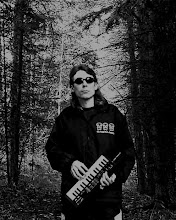
Alan Parsons, an engineer at
On their next album, ‘I Robot,’ a funk-inspired affair, the synthesizer begins to play a larger role. It’s worth mentioning that a device called the Projectron was also used on this (and other APP albums). The Projectron was a one-off device created by Parsons himself:
“The Projectron was effectively an analog ‘sampler’. It could therefore produce any sound fed into it. It was a little like the Mellotron, but was capable of much higher quality. Usually it would reproduce tape loops individually recorded to a 16 or 24-track tape machine. The attack and decay times were adjustable using voltage control technology. One of the most featured sounds is the female background vocals on Breakdown. The Projectron looked something like a keyboard synthesizer but with lots of sockets on the front panel for connections to a multi track tape machine. Sadly, there are no known photos of it and it has disappeared into the annals of legend.”
The EMI Vocoder shows up on ‘The Voice’ (a track inspired by The Temptations’ ‘Papa Was A Rolling Stone’):
The Raven [from Tales of Mystery & Imagination] was the first rock song to feature a vocoder, which was designed by EMI's Research Laboratories. Eric Woolfson: "That's right, that was one of the earliest uses of vocoder. It was a machine that the EMI scientists had developed, a very cumbersome thing that was very much in its early stages. They had gotten it together in a way that let us do some relatively new things with it.”
This would be one of the rare occasions Alan can be heard doing 'lead vocals' in his career. "For The Raven it was not a real vocal sound at all, it was an electronic synthesis of my voice. I also did that electronic piece on The Voice ('he's gonna get you') [from I Robot]. The part on Time [from Pyramid] could be argued as a counter lead vocal. The real reason that I don't sing is that I don't think I'm a really good singer. Modesty prevents me from stealing any limelight. I'd much rather have people ask ‘why don't you sing?’, than 'why do you sing?’”
As for the synths used here, information is a little sketchy. Duncan Mackay played a Yamaha CS-50 or CS-60 (and a prototype CS-80 on subsequent albums); there may have also been an
*Thanks to Micke via the Vintage Synth Explorer forums for the interview excerpts.
The title track, an instrumental, opens the album. Some nice phased sweeps start things off, and a bubbly bass sequence propels the track along as various acoustic elements are added; including choir, cymbalom, and kantele.
I Robot, courtesy of unstoppable3rd
Next up, the otherworldy ballad "Some Other Time." The synthesizer parts here are such that they blend seamlessly with the orchestration. The most overtly synthetic-sounding part, ironically, appears to be guitar fed through an effects pedal.
Some Other Time, courtesy of leonheart54
'The Voice,' on which you can hear the EMI vocoder. This song was inspired by The Temptations' epic track 'Papa Was A Rolling Stone.' Well worth a listen if you enjoy this one.
The Voice, courtesy of colejordan123
The final track on the album is perhaps my favourite. My one complaint is that it's so short. Beautiful synth-work throughout, and the orchestra just tops it off. The concept here is an addendum to the Book of Genesis, in which robots, which we've created in our own image, inherit the earth.
Genesis Ch. 1 V. 32, courtesy of PARAFER2004
I could go on posting tracks from this album. There's the shimmering proto-ambient track 'Nucleus,' which I suspect features heavy use of the Projectron. There's the slide-guitar vs. synthesizer dreaminess of 'Day After Day.' There are the album's funkiest moments in 'I Wouldn't Want To Be Like You' and 'Breakdown,' which don't have much to do with synthesizers, but are fantastic tracks. Perhaps the only song I tend to skip is 'Total Eclipse' which is exactly the sort of dramatic music that should accompany an eclipse of the sun. Composed exclusively of choir and discordant strings, it doesn't make much sense alongside the other tracks unless you've listened to the 'Fall Of The House Of Usher' suite from the previous album. I hope, by hearing these excerpts, you'll be tempted to give I Robot a listen.

No comments:
Post a Comment